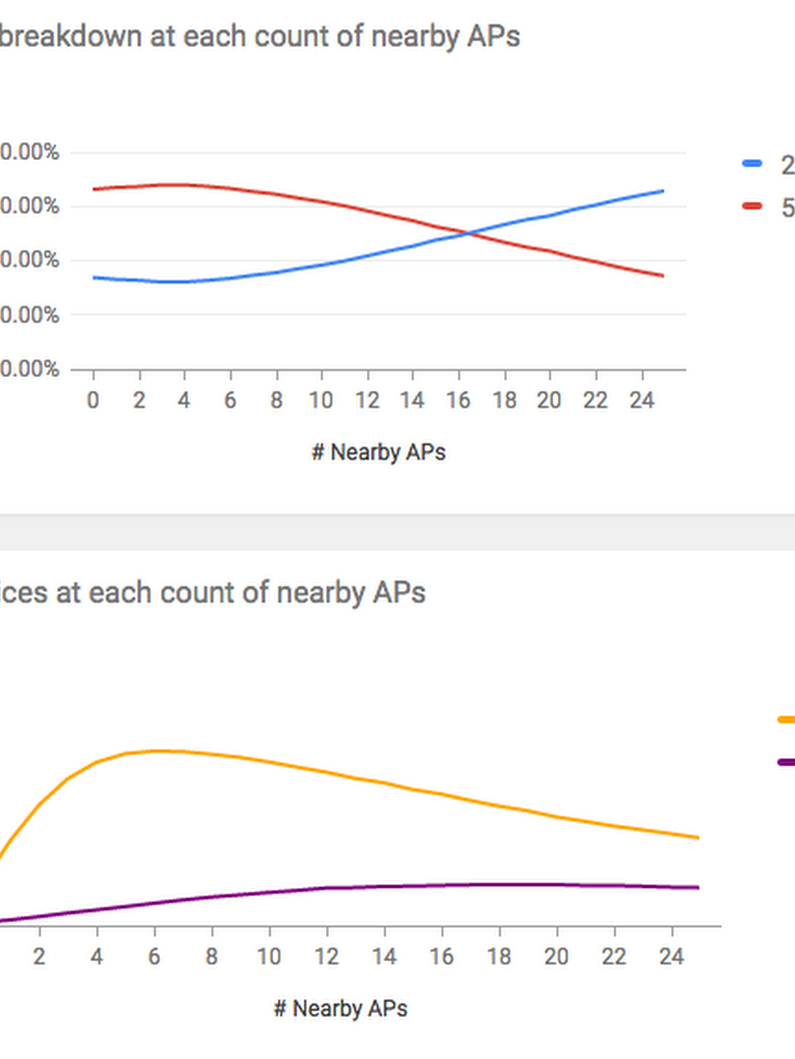2016-11-24 »
While at the IETF conference, I showed various people my wifi speed data. One of the things that's been bugging me for a while is that average speed in MDUs (apartments) is higher than the average speed in SFUs (standalone homes), even accounting for signal strength. That is, even at the same signal strength, MDUs go faster on average. This is the reverse of what I'd expect, because MDUs are denser and should presumably have higher levels of interference.
One person at the conference suggested I try breaking down the results by number of attached stations and/or number of nearby APs, with the theory that maybe SFUs have more stations per AP. That gave an important clue.
I also tried breaking down the difference between 2.4 and 5 GHz: that's even more interesting. We can see that SFUs are actually faster on 2.4 GHz than MDUs, and about equal on 5 GHz. Both of these sound about right because 2.4 GHz is more crowded and so more susceptible to congestion in dense MDUs. However, MDUs mysteriously have a larger fraction of devices on 5 GHz than SFUs do, and this is what accounts for the higher average speed in MDUs.
This is pretty mysterious, and applies even if I filter down to only a particular device type (iPhone 6S in this case), so it has little to do with who has more money and can afford newer devices.
But the weirdest thing of all is the plot of 2.4/5 GHz band breakdown vs number of nearby APs. The more APs are visible nearby, the more the fraction of 5 GHz devices drops. It could be my code for counting the number of nearby APs is wrong, although the shape looks roughly right (MDUs have more nearby APs than SFUs). That sounds like a bug. Maybe our 5 GHz wifi (ath10k) breaks more often when more devices are connected to it?

Why would you follow me on twitter? Use RSS.
